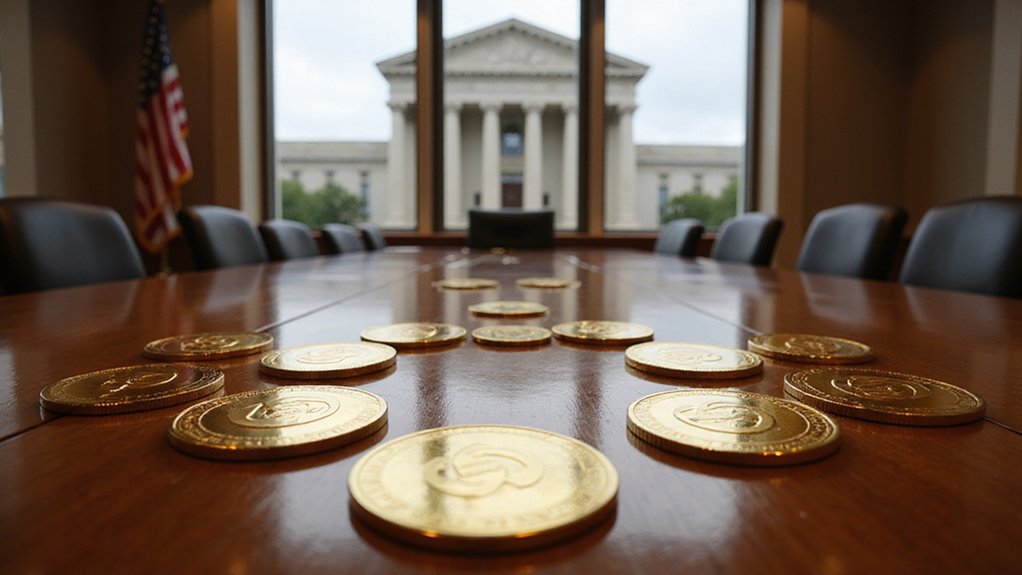Every well-intentioned financial regulation seems to carry within it the seeds of its own circumvention, and the recently proposed GENIUS Act—ostensibly designed to bring order to the chaotic world of stablecoin issuance—proves no exception to this iron law of regulatory unintended consequences.
Banking industry veterans have raised alarm bells over what they characterize as a regulatory Trojan horse embedded within the Act’s framework. The legislation’s seemingly restrictive approach to stablecoin issuance contains a curious provision that explicitly permits uninsured national banks and federal branches of foreign banks to enter the market—a scope expansion that could theoretically dwarf traditional deposit-taking institutions.
A seemingly restrictive regulatory framework conceals expansive loopholes that could fundamentally destabilize traditional banking through institutional scope creep.
The mathematics are sobering. If even a modest fraction of the $18 trillion in U.S. bank deposits migrated to stablecoin vehicles, the resulting upheaval would fundamentally reshape American finance. Yet the Act’s broad entity eligibility requirements create precisely such possibilities, particularly through novel charter arrangements or cross-jurisdictional frameworks that exploit regulatory arbitrage opportunities.
Perhaps more troubling is the Act’s heavy reliance on future regulatory discretion to craft implementation rules. This delegation creates an enforcement vacuum where inconsistent oversight could enable sophisticated actors to exploit gaps in anti-money laundering protocols or leverage blockchain’s unique features to circumvent traditional banking supervision. The Act’s three-tiered regulatory structure adds additional complexity that could further obscure oversight responsibilities across different issuer categories. The civil penalties structure, with fines reaching up to $1 million per day for issuers, may prove insufficient deterrent for large-scale violations that could generate far greater profits.
The reserve requirements, while appearing stringent with their 1:1 backing mandate, contain their own vulnerabilities. The narrow list of acceptable reserve assets might accommodate less liquid instruments through regulatory rulemaking, while affiliate arrangements could theoretically hold riskier assets outside direct issuer control—a structure reminiscent of the off-balance-sheet vehicles that proved so problematic during previous financial crises.
Most ingeniously, the Act’s prohibition on direct interest payments to stablecoin holders says nothing about affiliate structures offering yield-bearing products linked to such holdings. This gap could spawn entire ecosystems of regulatory arbitrage, where the economic substance of interest-bearing deposits masquerades behind the legal form of non-yielding stablecoins. Such arrangements could even facilitate crypto staking operations through complex derivative structures that technically comply with the prohibition while delivering comparable returns.
The cumulative effect represents a masterclass in regulatory capture through complexity—where ostensible restrictions create new pathways for the very activities they purport to control.








